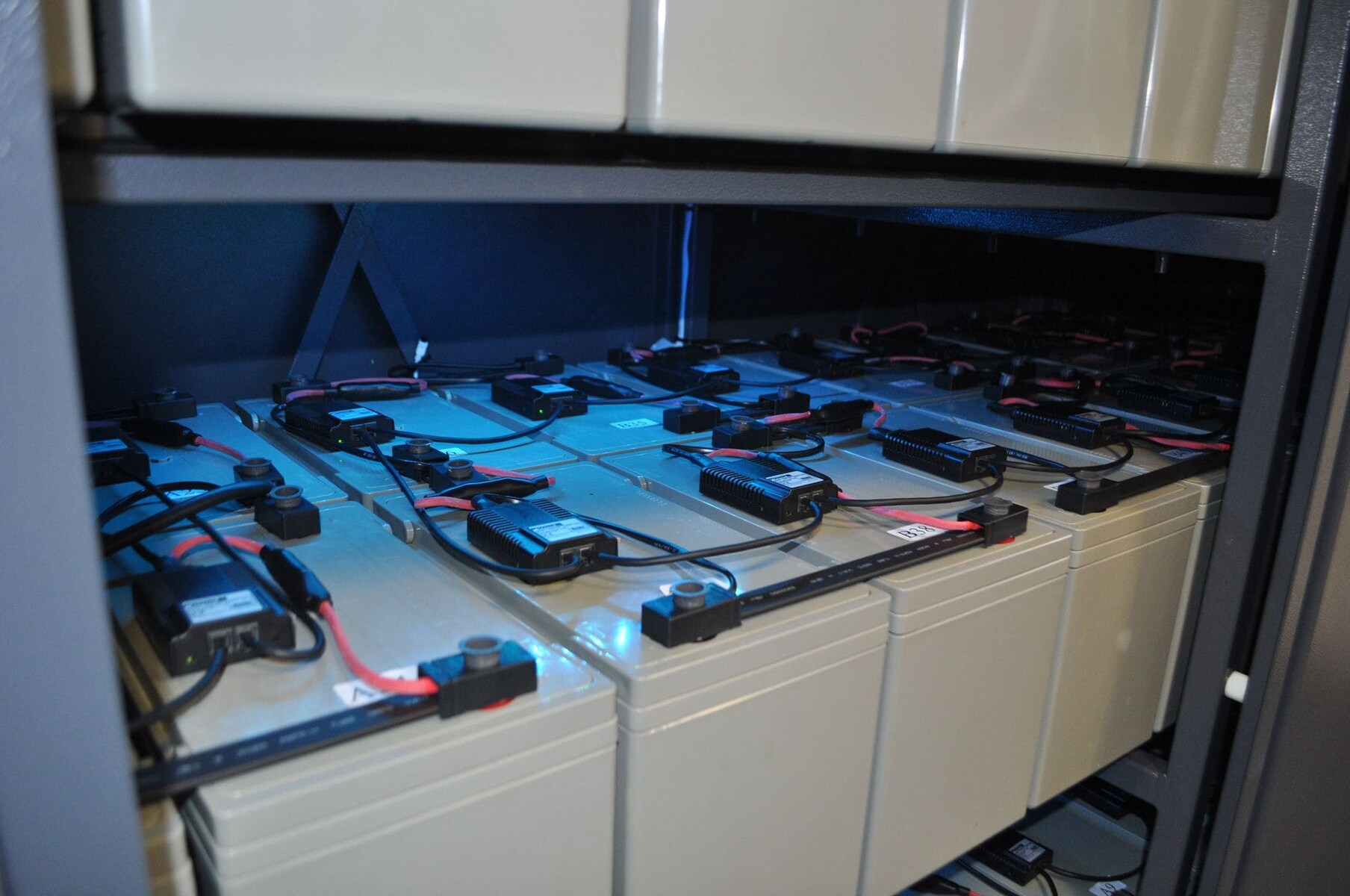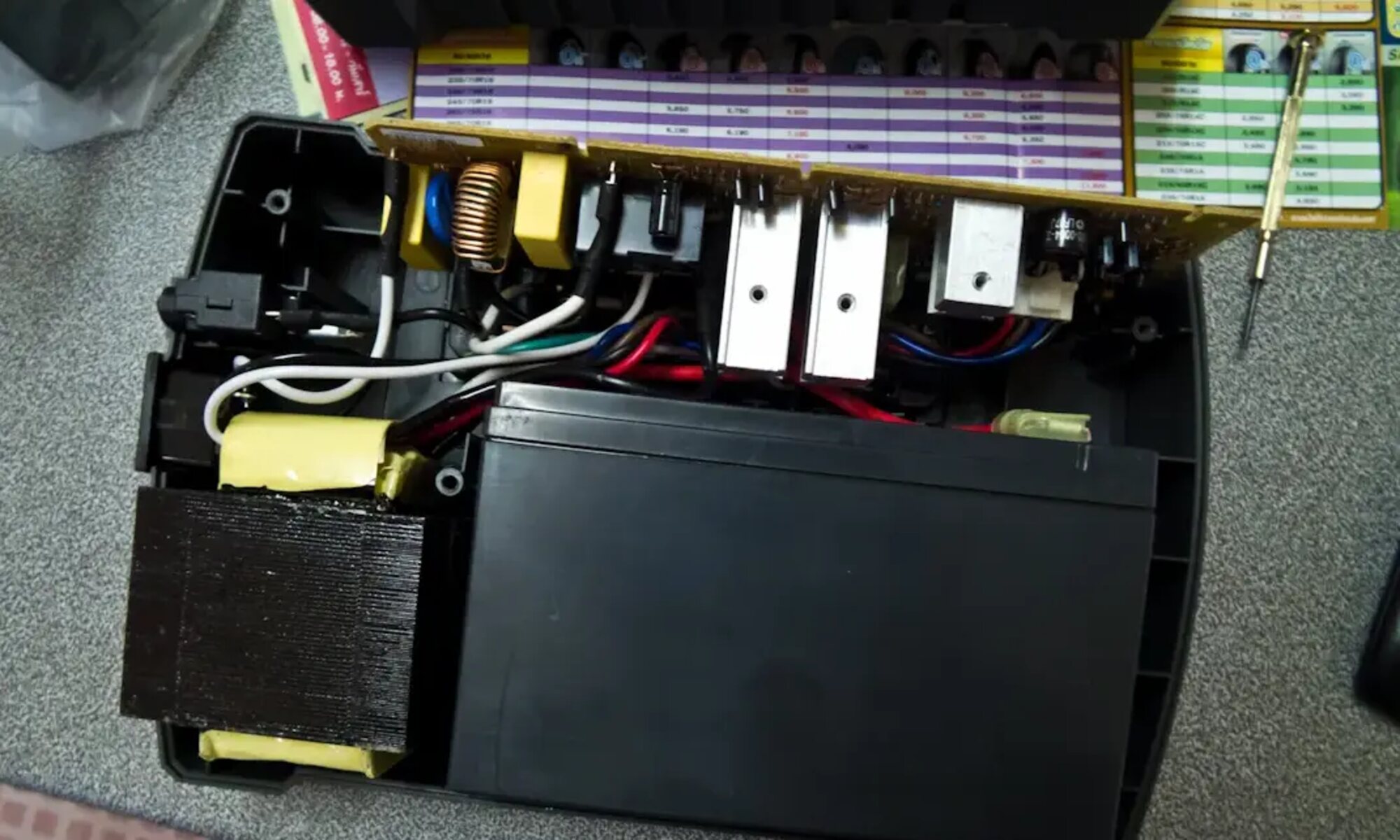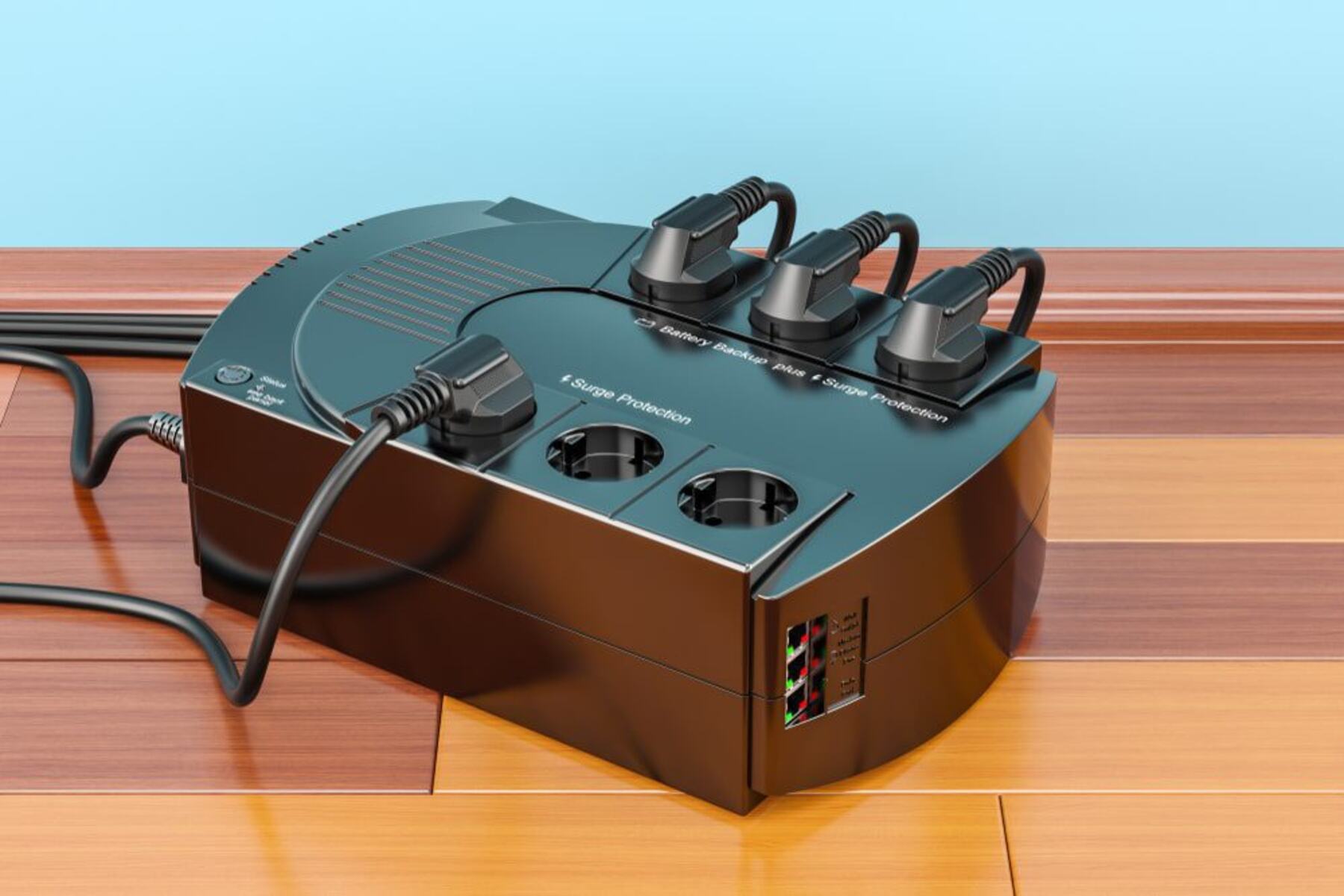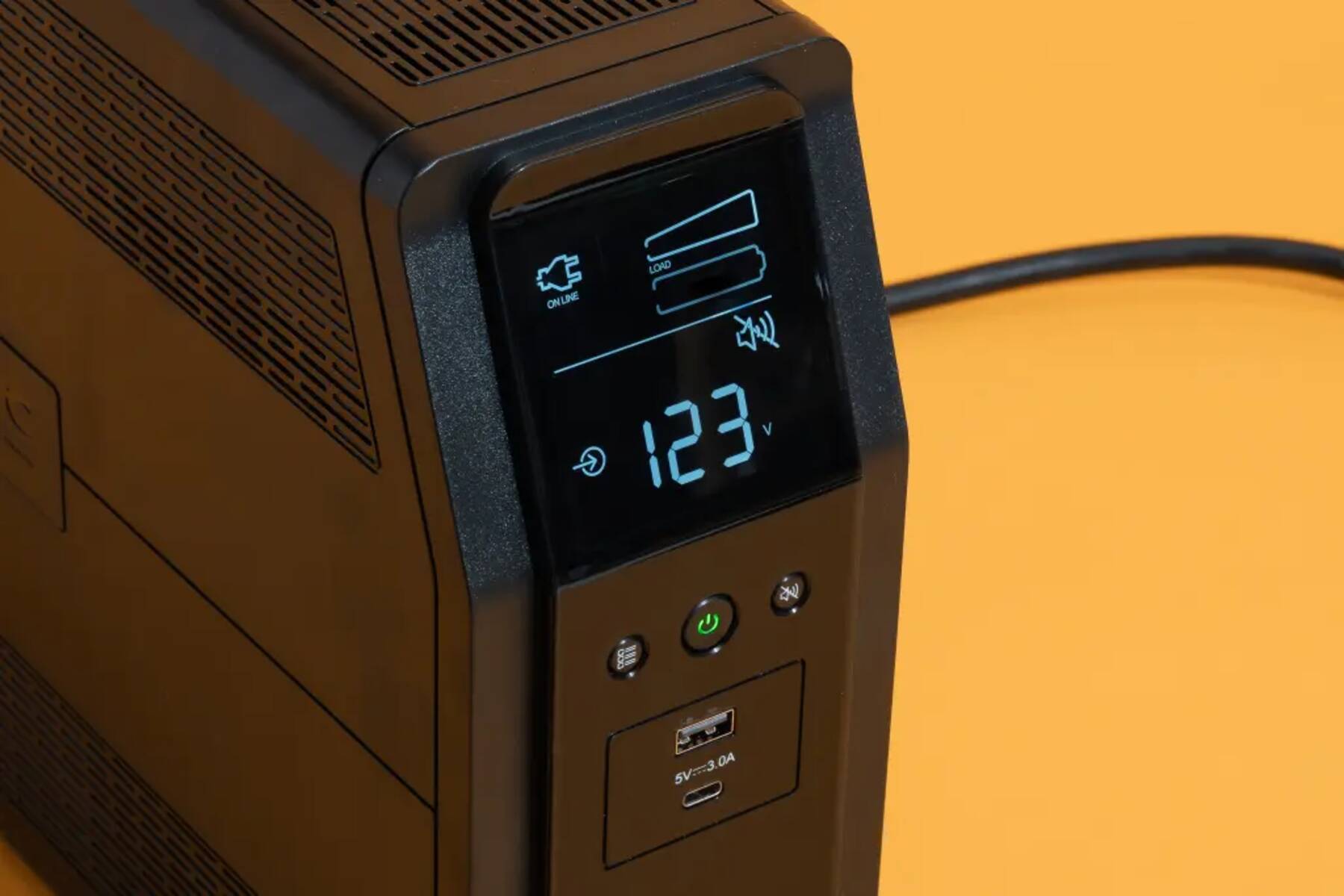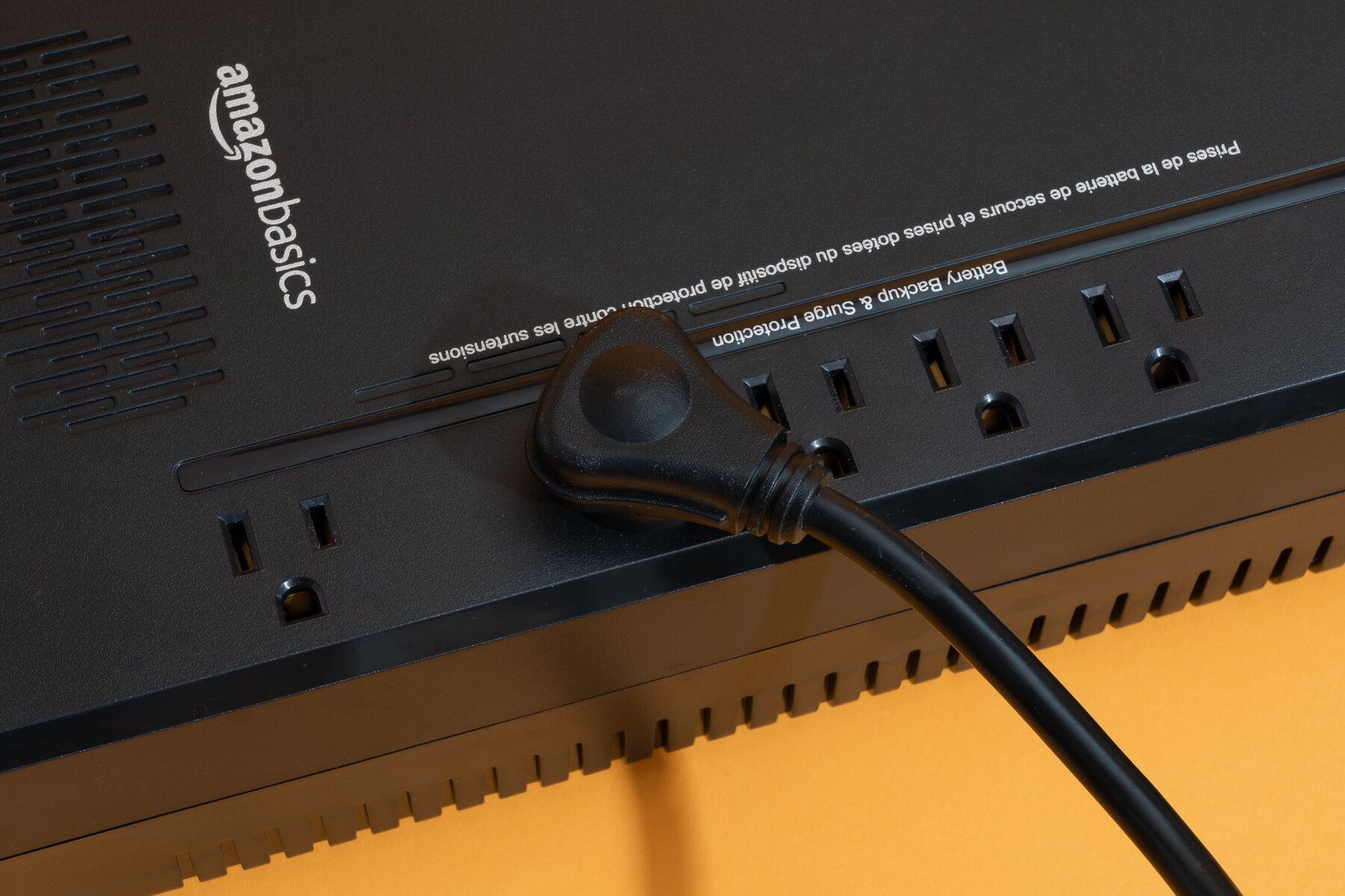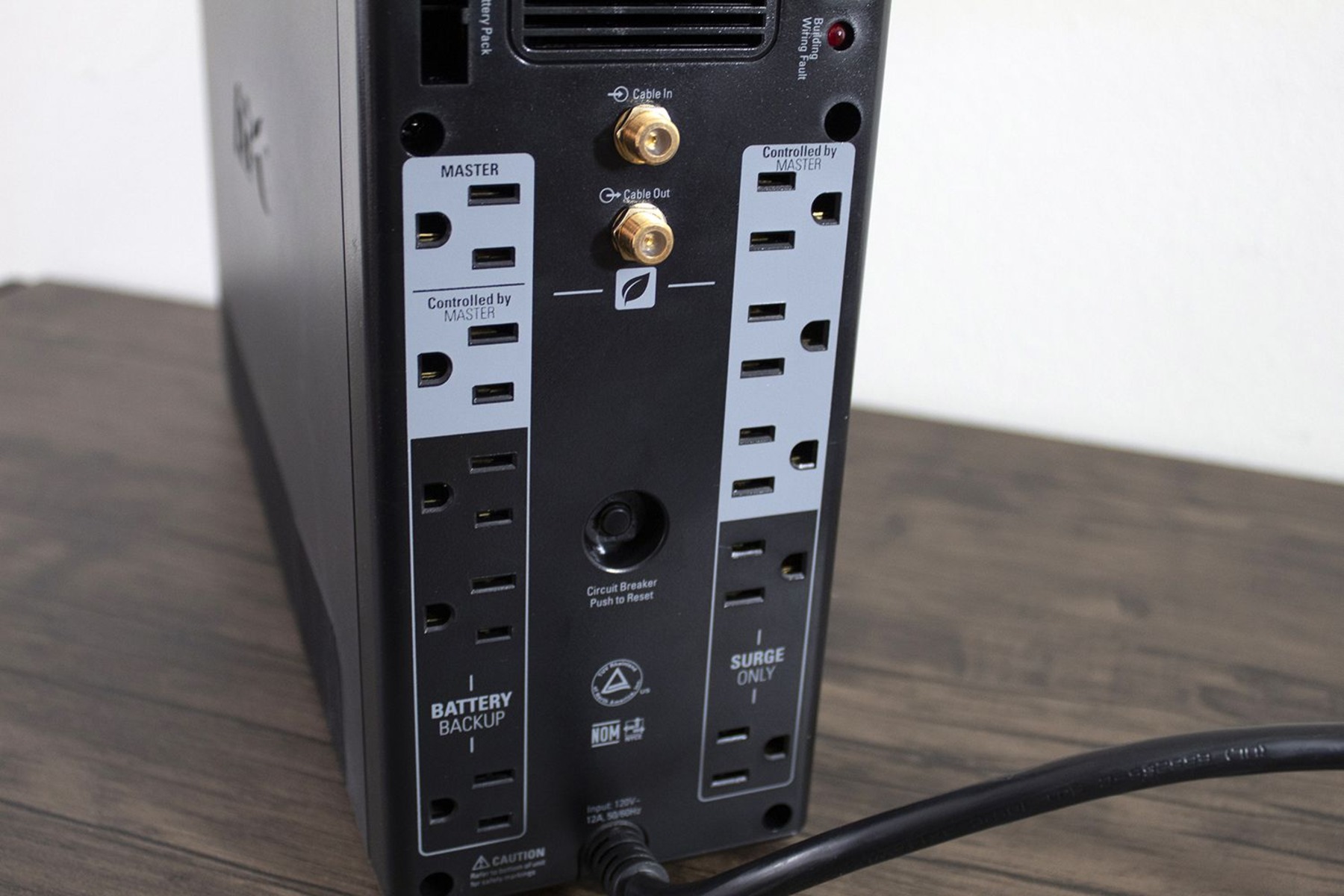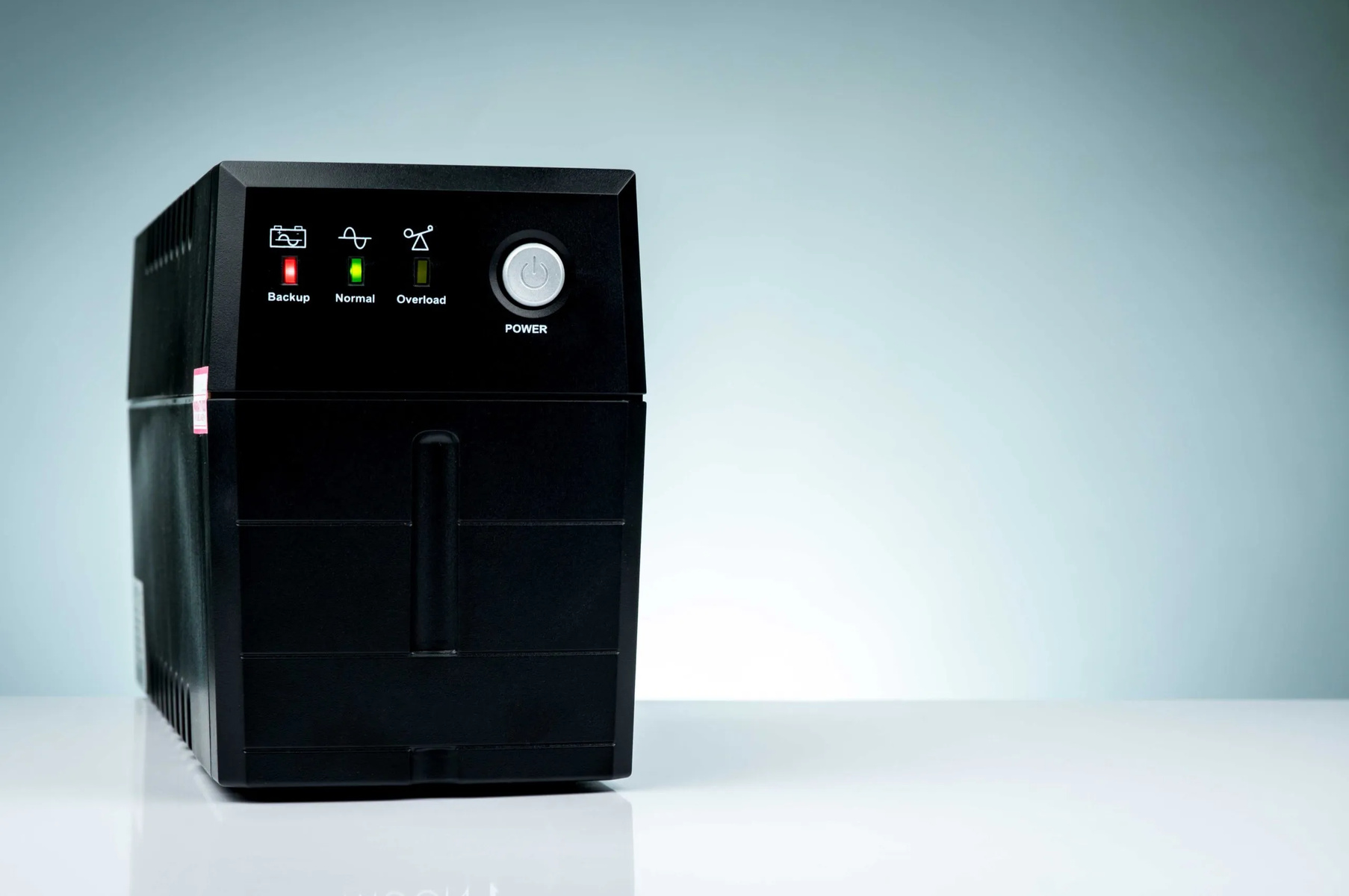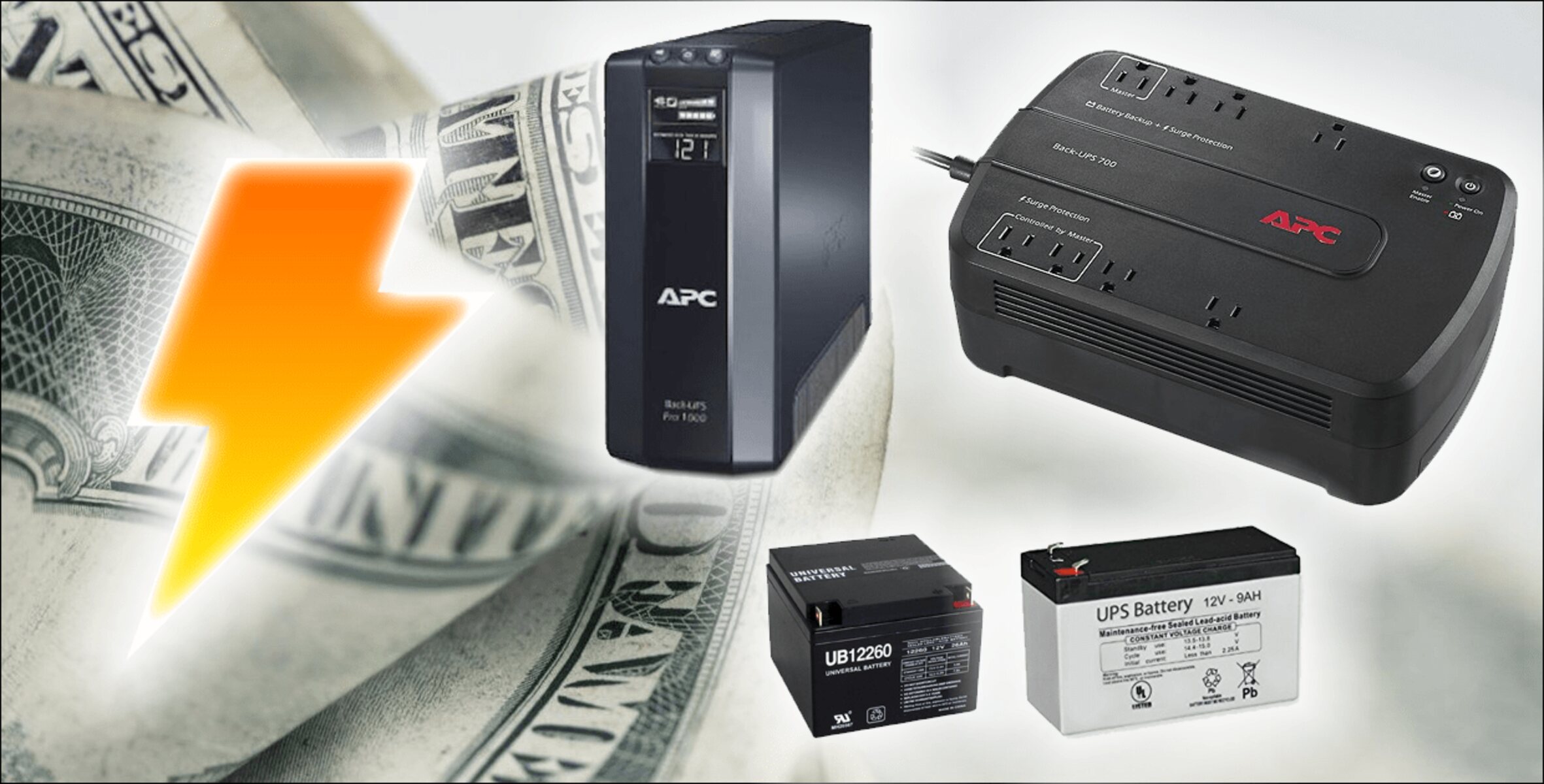Introduction
Welcome to this guide on how to clean up UPS battery acid. Uninterruptible Power Supply (UPS) systems are essential for providing backup power to electronic devices during power outages. However, over time, the batteries in UPS systems may leak or experience acid buildup, posing safety hazards and potentially damaging the equipment.
Removing and cleaning up battery acid is crucial to maintain the functionality and safety of your UPS system. In this article, we will walk you through the necessary steps and safety precautions to effectively clean up UPS battery acid without risking any harm.
Please note that while these steps generally apply to most UPS systems, it’s important to refer to the manufacturer’s instructions specific to your particular model. Additionally, ensure you have the necessary supplies and protective equipment before starting the cleaning process.
Remember, safety should always be your top priority when dealing with battery acid. By following the steps outlined in this guide, you can safely clean up UPS battery acid and keep your equipment running smoothly.
Safety Precautions
Before beginning the process of cleaning up UPS battery acid, it’s important to take proper safety precautions to protect yourself and prevent any potential accidents. Here are some essential safety measures to keep in mind:
- Wear protective clothing and equipment: Before handling battery acid, make sure to wear appropriate protective clothing, such as gloves, goggles, and a long-sleeved shirt. This will help safeguard your skin, eyes, and respiratory system from any contact with the acid.
- Work in a well-ventilated area: Battery acid fumes can be harmful if inhaled. Ensure that you are working in a well-ventilated area or have proper ventilation systems in place to avoid any respiratory issues.
- Turn off the UPS system: Before cleaning the battery acid, make sure to turn off and unplug the UPS system. This will prevent any electrical shock or short-circuiting while working with the batteries.
- Handle acid-sensitive materials with care: Battery acid can corrode certain materials, such as fabrics and metals. Avoid using acid-sensitive materials or ensure they are adequately protected before starting the cleaning process.
- Use appropriate tools: When handling battery acid, use non-metallic tools, such as plastic or rubber, to prevent any reactions or sparks that could ignite the acid. Metal tools can cause a dangerous chemical reaction when in contact with the acid.
- Avoid contact with eyes and skin: In case of any accidental contact with battery acid, immediately rinse the affected area with plenty of water for at least 15 minutes. If the irritation persists, seek medical attention promptly.
- Store and dispose of batteries properly: Follow proper storage and disposal guidelines provided by the manufacturer or local regulations. Batteries should be stored in a cool, dry place and taken to a designated recycling facility for disposal.
By adhering to these safety precautions, you can minimize the risk of accidents and ensure a safe and effective cleaning process for UPS battery acid.
Supplies Needed
Before you begin cleaning up UPS battery acid, it’s crucial to gather all the necessary supplies to ensure a smooth and efficient process. Here are the essential items you will need:
- Safety equipment: Gloves, goggles, and a long-sleeved shirt to protect your skin, eyes, and respiratory system from exposure to battery acid.
- Non-metallic tools: Plastic or rubber tools to handle the batteries and avoid any reactions or sparks that could ignite the acid.
- Baking soda: A mild alkaline substance that neutralizes battery acid. This will be used to clean up spills and safely handle the acid.
- Water: Plenty of water for rinsing and diluting the battery acid during the cleaning process.
- Empty containers: Sealable containers to store any removed batteries or battery acid safely.
- Neutralizing agent: If recommended by the manufacturer, have a specific neutralizing agent on hand to neutralize the battery acid before disposal.
- Cleaning cloth or sponge: Use a cloth or sponge that you can dedicate to the cleaning process, as it may get damaged or contaminated by the acid.
- Ventilation: Ensure proper ventilation in the area where you will be working to prevent the accumulation of acid fumes.
- Container for battery disposal: A designated container for safely disposing of old batteries. Check local regulations on battery disposal and recycling.
Having these supplies ready before you begin will not only make the cleaning process more efficient but also ensure your safety while handling battery acid. Remember to refer to the manufacturer’s instructions for any additional or specific supplies required for your UPS system.
Step 1: Preparation
Proper preparation is important before you start cleaning up UPS battery acid. This step ensures that you have everything you need and sets the stage for a safe and effective cleaning process. Here’s what you should do:
- Gather the necessary supplies: Refer to the “Supplies Needed” section to ensure you have all the required safety equipment, tools, and cleaning materials readily available.
- Choose a well-ventilated area: Select a well-ventilated space, preferably outdoors or in a room with open windows, to avoid the buildup of acid fumes during the cleaning process.
- Put on protective gear: Wear the appropriate safety equipment, including gloves, goggles, and a long-sleeved shirt, to protect yourself from direct contact with battery acid.
- Turn off and unplug the UPS system: Ensure that your UPS system is turned off and unplugged from the power source to prevent any electrical shock or accidental power supply during the cleaning process.
- Read the manufacturer’s instructions: Familiarize yourself with the manufacturer’s instructions for your specific UPS model. This will provide guidance on handling the batteries and any additional steps unique to your system.
- Prepare a neutralizing agent (if required): If recommended by the manufacturer, prepare a neutralizing agent to safely neutralize the battery acid before disposal. Follow the instructions provided carefully.
- Ensure proper ventilation: Verify that the area where you’ll be working has adequate ventilation to minimize the concentration of acid fumes. If necessary, use fans or open windows to improve airflow.
By completing these preparation steps, you will be ready to proceed with the subsequent stages of cleaning up UPS battery acid safely and effectively.
Step 2: Remove the Battery
Once you have completed the necessary preparations, it’s time to remove the battery from your UPS system. Follow these steps to safely remove the battery:
- Refer to the manufacturer’s instructions: Consult the user manual or any provided instructions specific to your UPS system to understand the proper removal procedure. Different models may have different methods or precautions.
- Turn off and unplug the UPS system: Make sure the UPS system is turned off and disconnected from the power source before attempting to remove the battery. This prevents any electrical hazards.
- Locate the battery compartment: Identify the location of the battery compartment within your UPS system. In most cases, it will be easily accessible from the exterior, but some models may require removing panels or screws to access the battery.
- Use caution when handling the battery: Batteries can be heavy and slippery, so handle them with care to avoid dropping or tipping them over. Use both hands to support the weight and maintain a secure grip.
- Disconnect the battery cables: Be mindful of the terminal connections on the battery. Use caution when disconnecting the cables to prevent any accidental contact between the cable ends and metal surfaces.
- Label or mark the cables: To ensure proper reconnection later, label or mark the cables and connectors before removing them. This will help you easily identify which cable goes where when installing a new battery or reattaching the cleaned battery.
- Set the battery on a safe surface: After removing the battery, place it on a stable and non-conductive surface, such as a rubber mat or cardboard, to prevent any contact with metal or conductive surfaces that could cause a short circuit.
- Keep children and pets away: Store the removed battery in a secure location away from children and pets. Battery acid is toxic and could cause harm if ingested or mishandled.
By following these steps, you will be able to safely and effectively remove the battery from your UPS system, preparing it for the cleaning process.
Step 3: Cleaning the Battery Terminals
Once you have successfully removed the battery, it’s time to clean the battery terminals. The battery terminals can accumulate corrosion and buildup over time, which can affect the performance of your UPS system. Follow these steps to clean the battery terminals:
- Inspect the terminals: Examine the battery terminals for any signs of corrosion, rust, or other debris. If you notice significant buildup, it’s essential to clean it before reinstalling the battery.
- Prepare a cleaning solution: In a small container, mix a solution of baking soda and water. Aim for a ratio of approximately 1 tablespoon of baking soda to 1 cup of water. Stir the mixture well until the baking soda is fully dissolved.
- Dampen a cloth or sponge: Moisten a cloth or sponge with the baking soda solution. Ensure it is damp but not dripping wet to avoid any excess liquid getting into the battery or the UPS system.
- Gently scrub the terminals: Use the damp cloth or sponge to gently scrub the battery terminals, removing any corrosion or buildup. Pay close attention to the areas where the terminals connect to the battery cables.
- Rinse with clean water: After scrubbing the terminals, dampen a clean cloth or sponge with plain water. Use it to rinse off any remaining baking soda solution. Make sure no residue is left on the terminals.
- Dry the terminals: Use a dry cloth or paper towel to thoroughly dry the battery terminals. Ensure they are completely dry before reconnecting the battery to prevent any potential short-circuiting or unwanted reactions.
- Clean the battery cable connectors: While cleaning the terminals, also inspect the battery cable connectors for any signs of corrosion or buildup. If necessary, use the same baking soda solution and cleaning process to clean the connectors.
- Inspect for damage or wear: Take this opportunity to check the battery terminals, cables, and connectors for any physical damage, such as cracks or frayed wires. If you notice any significant damage, consider replacing the affected components.
By following these steps and properly cleaning the battery terminals, you can ensure a clean and reliable connection when you reinstall the battery, improving the overall performance of your UPS system.
Step 4: Disposing of Old Batteries
Proper disposal of old batteries is crucial to protect the environment and comply with regulations. As you clean up UPS battery acid, it’s essential to dispose of the old batteries responsibly. Follow these steps to ensure safe and environmentally-friendly battery disposal:
- Research local regulations: Familiarize yourself with the regulations and guidelines regarding battery disposal in your area. Different regions may have specific rules regarding battery recycling and disposal.
- Find a designated recycling facility: Locate a recycling facility or a drop-off point that accepts used batteries. Many communities have designated locations where you can safely dispose of batteries.
- Prepare the batteries for disposal: Place the old batteries in sealable plastic bags or containers to prevent any leakage during transport. Make sure to wrap each battery individually if you are disposing of multiple batteries.
- Label the containers: Clearly label the containers as “Used Batteries” to indicate their contents and facilitate proper handling at the recycling facility.
- Transport the batteries safely: Follow appropriate safety measures when transporting the batteries to the recycling facility. Prevent the containers from tipping or falling over to avoid any potential spills or accidents.
- Drop off the batteries: Take the sealed containers of old batteries to the designated recycling facility or drop-off point. Ensure they are properly disposed of in accordance with local regulations.
- Keep records (if required): In some jurisdictions, you may be required to keep records or obtain a receipt of battery disposal. Check local regulations to see if such documentation is necessary.
- Consider battery trade-in/rebate programs: Some battery manufacturers or retailers offer trade-in programs or rebates for returning old batteries. Look for any available programs that can provide incentives for recycling your used batteries.
By following these steps and responsibly disposing of old batteries, you contribute to the preservation of the environment and support sustainable battery recycling practices.
Step 5: Cleaning Up Battery Acid Spills
Despite your best precautions, accidents may happen, and battery acid spills can occur during the cleaning process. If you encounter a battery acid spill, it’s crucial to handle it promptly and safely. Follow these steps to effectively clean up battery acid spills:
- Put on protective gear: Before addressing the spill, ensure you are wearing appropriate safety equipment, including gloves, goggles, and a long-sleeved shirt, to protect yourself from exposure to battery acid.
- Neutralize the acid (if recommended): If the manufacturer has provided a specific neutralizing agent, use it to neutralize the spilled battery acid. Follow the instructions provided carefully to ensure safe handling and neutralization.
- Contain the spill: Immediately surround the spilled battery acid with an absorbent material, such as baking soda or kitty litter, to prevent it from spreading further. Gently cover the spill area with the absorbent material, allowing it to soak up the acid.
- Wipe up the spill: Using disposable gloves and a damp cloth or sponge, carefully wipe up the absorbed acid from the spill area. Start from the outer edges and gradually work your way towards the center to contain any potential spreading of the acid.
- Dispose of contaminated materials: Place the used absorbent material and any contaminated cleaning supplies, such as gloves or wipes, in a sealed plastic bag. Dispose of it according to local regulations for hazardous waste.
- Rinse the area: After removing the spilled acid and contaminated materials, rinse the affected area thoroughly with water. This will help dilute and remove any remaining traces of battery acid.
- Dry and inspect the area: Once you have rinsed the area, use a clean cloth or towel to dry it thoroughly. Inspect the cleaned area to ensure there is no residue or signs of remaining acid.
- Dispose of cleaning materials properly: Dispose of the cloth or towel used to clean up the spill in the same manner as contaminated materials, following local regulations for hazardous waste disposal.
By following these steps and promptly addressing battery acid spills, you can ensure a safe and effective cleanup while minimizing any potential damage or hazards.
Step 6: Final Steps
After completing the cleaning process and addressing any spills or leaks, there are a few final steps to ensure the proper reinstallation of the battery and the safe operation of your UPS system. Follow these final steps to conclude the cleaning process:
- Inspect the cleaned battery: Before reinstalling the battery, double-check that it is clean, free from any residue, and in good condition. Ensure all connectors and terminals are dry and undamaged.
- Reconnect the battery cables: Using the labels or markings made earlier, reconnect the battery cables to their respective terminals. Make sure the connections are secure but avoid overtightening to prevent damage.
- Place the battery back in the UPS system: Carefully position the cleaned and reconnected battery back into the designated compartment of your UPS system. Ensure it is properly aligned and securely placed.
- Close any panels or covers: If you had to remove any panels or covers to access the battery, carefully replace and secure them back in place to protect internal components and ensure the proper functioning of the UPS system.
- Power on the UPS system: Once the battery is successfully reinstalled and all panels are secured, plug in and turn on the UPS system. Verify that it powers on correctly without any issues or error messages.
- Check battery status: Consult the manufacturer’s instructions or the UPS system’s control panel to verify the battery status. Ensure that the battery is being recognized and charging properly.
- Monitor future performance: Keep an eye on your UPS system’s performance, including battery life, backup time, and any signs of recurring battery acid issues. Regularly inspect and maintain your UPS system to ensure optimal functionality.
- Dispose of old cleaning materials safely: Finally, properly dispose of any used cleaning materials, gloves, or protective gear in accordance with local regulations. Follow the guidelines for disposing of hazardous waste.
By following these final steps, you can complete the cleaning process and ensure that your UPS system is ready for operation with a clean and well-maintained battery.
Conclusion
Cleaning up UPS battery acid is an important maintenance task that ensures the safe and efficient operation of your UPS system. By following the steps outlined in this guide and adhering to proper safety precautions, you can effectively clean the battery and terminals, dispose of old batteries responsibly, and address any acid spills that may occur.
Throughout the cleaning process, it is crucial to prioritize your safety. Wear protective gear, work in a well-ventilated area, and follow the manufacturer’s instructions for your specific UPS model. Handling battery acid requires caution and attention to detail to prevent accidents and injuries.
Remember to gather all the necessary supplies before starting the cleaning process. Use non-metallic tools, such as plastic or rubber, to handle the batteries and avoid reactions or sparks. Baking soda can be used to neutralize and clean battery acid spills, while water is essential for rinsing and diluting any remaining acid.
Proper disposal of old batteries is essential to protect the environment and comply with regulations. Research local guidelines, find designated recycling facilities, and transport the batteries safely for disposal.
By following the final steps, such as inspecting the cleaned battery, reconnecting the cables properly, and powering on the UPS system, you can ensure a smooth and reliable operation going forward. Regular monitoring and maintenance will help you identify any potential issues and ensure the long-term performance of your UPS system.
Cleaning up UPS battery acid is a crucial task to maintain the functionality and safety of your UPS system. By following the steps outlined in this guide, you can successfully clean the battery, prevent acid leaks, and ensure the uninterrupted power supply to your electronic devices when needed.







